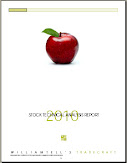May proves cruellest month for hedge funds
By Sam Jones, Hedge Fund Correspondent
Published: June 8 2010 20:07
Last updated: June 8 2010 20:07
On May 6, days after the EU moved to implement a huge €750bn bail-out package and on the eve of the UK’s knife-edge general election, traders at the world’s biggest hedge funds watched as wonderland numbers flickered across their screens.
Shares in Procter & Gamble plummeted 37 per cent on no news. Blue chip corporates traded for cents. In minutes the US Dow fell more than 9 per cent – its second-biggest intraday movement, after the great crash of 1929. Prices bounced back after this so-called “flash crash”, but confidence didn’t.
May has been the worst month for the average hedge fund since the collapse of Lehman Brothers in October 2008, according to industry data out on Tuesday – and for many it is a reminder that, in spite of 18 months of bullish markets, the world is still walking a financial tightrope.
Indeed, to some hedge fund traders’ eyes, the way individual names moved during the now infamous May 6 movements in the Dow was disconcertingly similar to the events of August 2007 – when previously imperceptible subprime jitters in the credit markets translated into a mass computerised dumping of stocks by the giant quantitative hedge funds AQR, Renaissance Capital and Goldman’s Global Alpha fund.
Though no explanation was forthcoming for the causes of the flash crash, it was, in the days that followed, painted as a freak event – idiosyncratic and technical.
Scant comfort was available for many hedge funds, though. On the Thursday and Friday of the first week of May, some lost billions.
From its newly opened offices in Geneva, traders for BlueTrend, the $10bn quantitative fund run by Brazilian financial engineer Leda Braga, saw the flagship portfolio dive 7.5 per cent – a loss of nearly a billion dollars – in the first week of May alone. BlueTrend closed May down 8.5 per cent, unable to recover.
For some funds, May was not merely on a par with but worse than October 2008.
According to Hedge Fund Research information published on Tuesday, the average hedge fund lost 2.26 per cent in May. Every single hedge fund strategy lost money during the month. And in many cases, it was the biggest and best-known hedge funds – such as BlueTrend – that suffered the most.
Paulson & Co – perhaps after its phenomenally successful shorting of the US subprime market in 2007 and 2008, the best known hedge fund in the world – was among those hit hard. The firm’s flagship Advantage fund, which alone manages close to $7bn, closed the month down 4.8 per cent. Worst hit, however, was the manager’s Recovery fund – set up in early 2009 to capitalise on the bounce-back of the global economy. The $7bn fund dropped 8.7 per cent in May, though it remains up 14.35 per cent so far this year.
The losses are noteworthy not so much for their size, or the concern they might have caused investors, but rather because they caught so many off guard and were so widespread.
The first half of the month was marked by a growing panic from many of the largest funds to delever and unwind their biggest positions. April had caught many off guard. During that month, funds had been increasingly confident of their positions and outlook in global markets – not least as far as the eurozone was concerned. For many, April was a month to hammer home their advantage by bulking up their positions.
For macro funds, which trade on global economic imbalances, the eurozone’s difficulties were a godsend. Funds piled into “differentiation trades” – typically short the euro, and long Asian or Latin American currencies and equities. They were undone by the size of their positions.
“As problems in Europe grew, many market participants including banks and hedge funds began to try and derisk the other leg of their short euro trade – the large, long emerging markets positions – and they all rushed out at once,” says Jamil Samaha at CQS, a large London credit hedge fund.
The effect was a sudden fall in Asian markets that triggered a vicious cycle of derisking. Losses on macro funds’ long-Asian plays far outstripped gains on their short-euro positions.
Some global macro funds were able to staunch the losses, others were not. Brevan Howard, Europe’s largest macro hedge fund, saw its flagship vehicle down 0.7 per cent as of May 21. Paul Tudor Jones’ BVI Global fund closed the month down 2.26 per cent. Moore Capital, however, saw its flagship fund lose 7.7 per cent.
“There were movements in credit during May that were greater than anything we saw after Lehmans,” says a manager at one of the world’s biggest credit traders. “The banks were panicked. They were marking positions to the bone and we were marking some big losses mid-month.”
The effect cycled into the bond markets. Hedge funds specialising in convertible arbitrage were hit hard, according to brokers. As funds looked to hedge their risks, they bought CDS protection en masse, forcing spreads wider and only further exacerbating the cost of hedging. The only choice was to dump the underlying instruments.
In the words of one hedge fund manager, May was “a wilderness of mirrors” – when the many uncertainties and unknowns of an overstretched market became impossible to square.
The question for managers now, though, is how to make back money and where the crisis will go next – a quandary that depends on whether May’s events were an aberration, or the beginning of a new secular bear market.
Copyright The Financial Times Limited 2010.


















